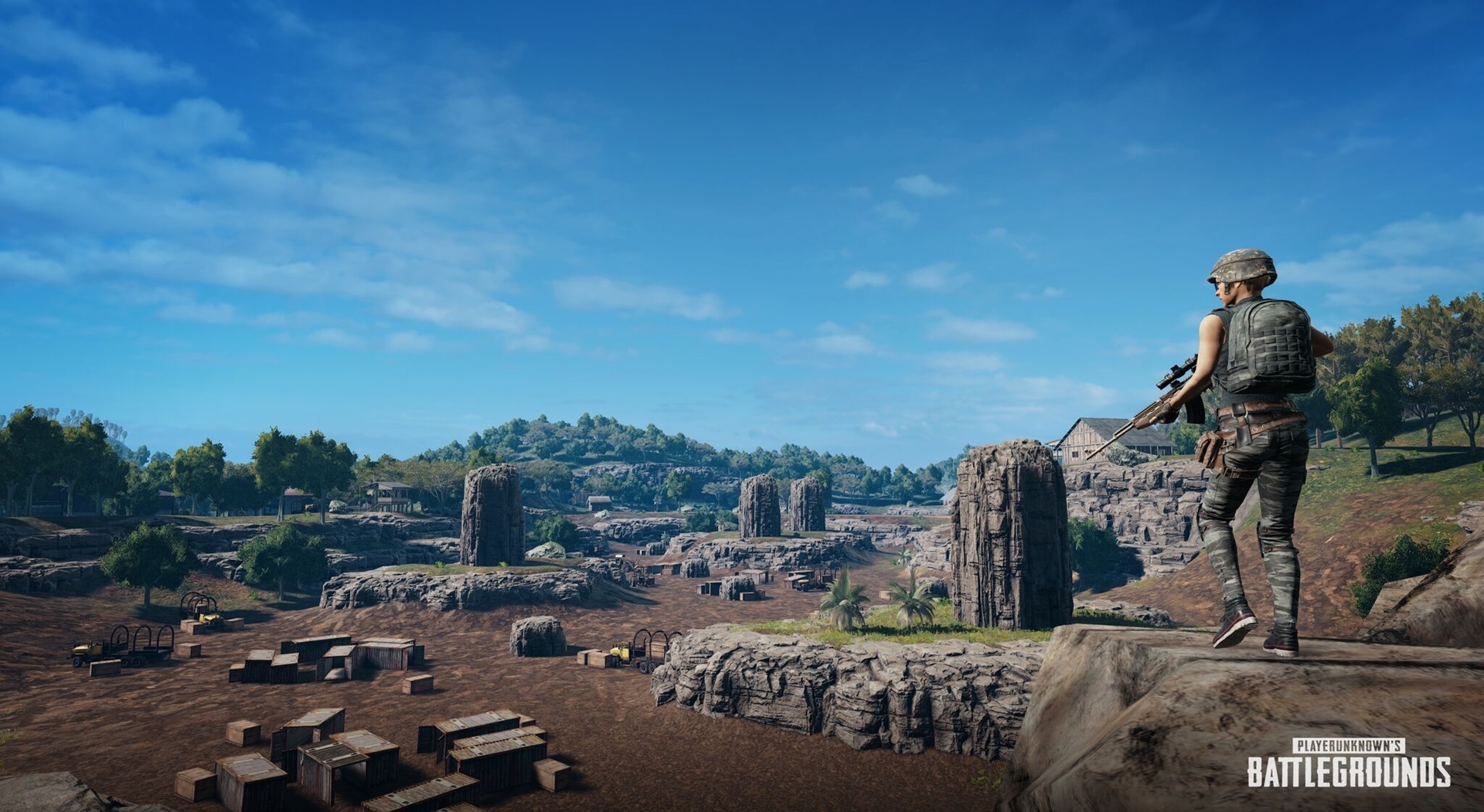PUBG's Savage map has a blue zone that adjusts its timing 'based on the number of players left'
Smaller redzones, new island locations, and more dynamic weather have also been added to the 4x4km map.

PUBG's Savage map just began its second round of player testing on experimental servers, and if you aren't planning on participating yourself, patch notes detail some of the changes that have occurred since the 4x4km map was first tested two weeks ago.
Notably, red zones have been decreased in size, and bombardment won't last as long, which may be a relief to players who aren't just caught in them but have to listen to them (when we first tried out the map, I found it to be almost constantly noisy, which made it difficult to focus on player movement sounds). Even more interestingly, there's a change to the blue zone as well:
"A new feature enables the blue zone to calculate and adjust its waiting time based on the number of players left alive."
Weirdly, this is a bit like a suggestion I had for Radical Heights, Boss Key's free-to-play battle royale game where those mid-game lulls seem to last a little too long. During a round where the majority of players are killed early on, those lulls as the remaining players have to travel to the final circle can feel a bit uneventful. A circle that adjusts its speed based on how many player remain sounds like a good idea for bringing about the endgame a bit quicker, and since PUBG's smaller map is aiming for faster and more exciting matches, this might be a good fit. I'm interested to see how this new circle works on Savage.
Three new areas have been added to the tropical setting: docks along the southeast coast, plus an abandoned quarry and a location called Banyan Grove in the center of the island. Weather, which could change once during a match during the first test, is more dynamic and can change in real time throughout the entire round. Both boat and grenade spawns have increased, and some changes have been made to terrain in spots that make it easier to climb.
You can read the full patch notes here.
Keep up to date with the most important stories and the best deals, as picked by the PC Gamer team.

Chris started playing PC games in the 1980s, started writing about them in the early 2000s, and (finally) started getting paid to write about them in the late 2000s. Following a few years as a regular freelancer, PC Gamer hired him in 2014, probably so he'd stop emailing them asking for more work. Chris has a love-hate relationship with survival games and an unhealthy fascination with the inner lives of NPCs. He's also a fan of offbeat simulation games, mods, and ignoring storylines in RPGs so he can make up his own.

